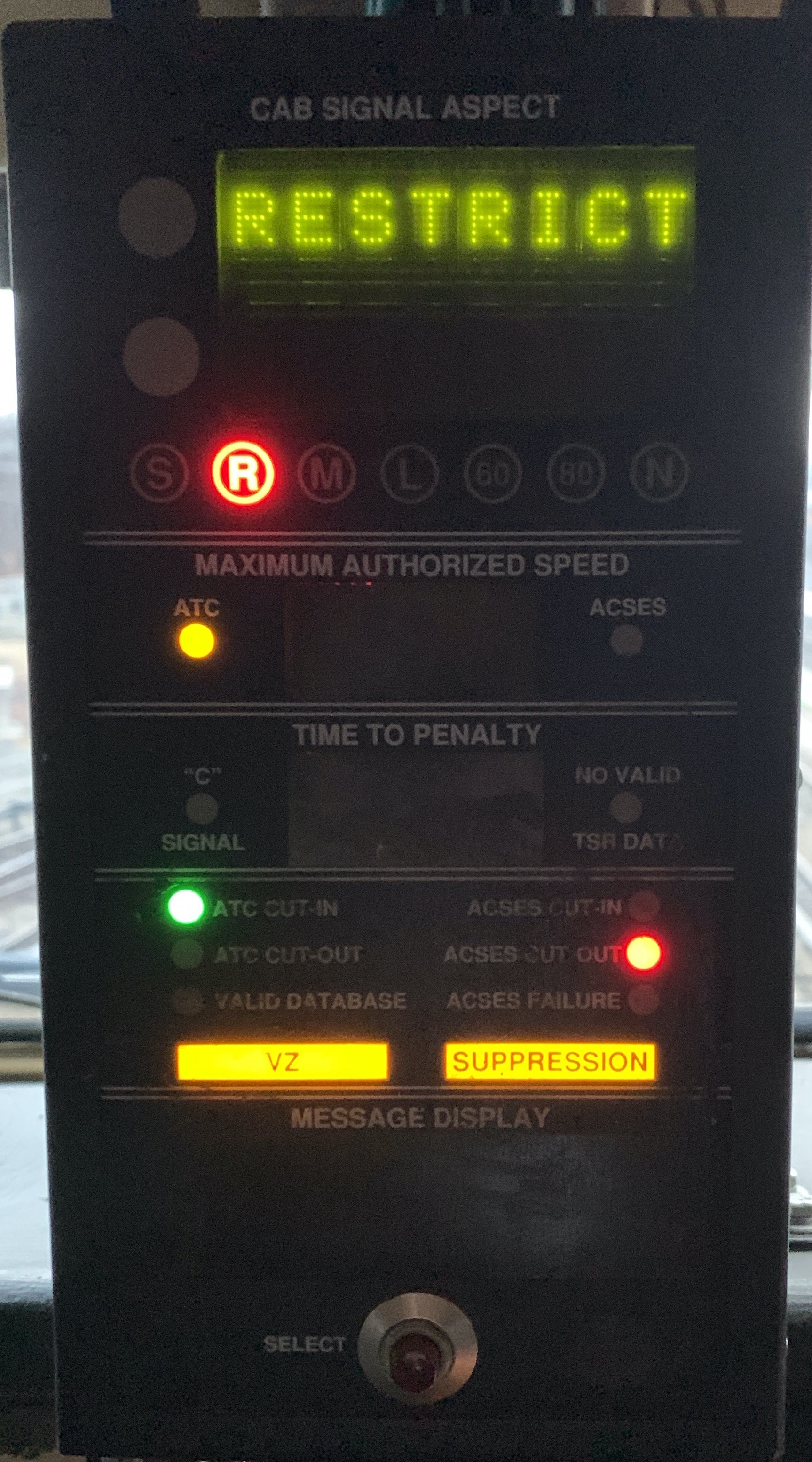- Joined
- Sep 15, 2017
- Messages
- 2,926
Mod feel free to move to freight group if more appropriate - but given it’s PTC related I figured it most affected passenger operations.
CSX seeks to permanently discontinue the cab signal system on the RF&P. The RF&P is the only I-ETMS PTC equipped CSX subdivision that has cab signals with wayside intermediate signals.
The subdivision is equipped with visual wayside intermediate signals and a cab signal system. A wire from the cab signal aspect display to the I-ETMS on board computer provides the current cab signal aspect while wayside interface units on the home signals provide interlock switch position speed information and home signal status. Additionally, the legacy automatic train control system on the locomotives require cab signal downgrades to be acknowledged by the engineer and, on the passenger equipment, provides traditional enforcement of cab signal speeds.
Because of the configuration of the system on this subdivision - a wayside or on board failure that requires the cab signal unit to be cut out also requires PTC to be cutout as absent an indication from the cab signal display in this system configuration, PTC will not allow movement above restricted speed - and the RF&P lacks the “clear to next interlocking” indication at the control points that serves as a workaround on other cab signaled subdivisions without waysides.
Previously CSX planned to only discontinue the use of the legacy ATC speed control on its locomotives - unsure whether they were granted this. Now they plan to install wayside interface units on all the intermediate blocks and discontinue the cab signal system altogether. Amtrak, VRE, and the Commonwealth of Virginia all concur with the request - in addition to the issues cited regarding cutouts I'm guessing another reason is avoiding the extra costs related to cab signals for some of Virginia’s planned upgrades.
https://www.regulations.gov/document/FRA-2021-0111-0001
CSX seeks to permanently discontinue the cab signal system on the RF&P. The RF&P is the only I-ETMS PTC equipped CSX subdivision that has cab signals with wayside intermediate signals.
The subdivision is equipped with visual wayside intermediate signals and a cab signal system. A wire from the cab signal aspect display to the I-ETMS on board computer provides the current cab signal aspect while wayside interface units on the home signals provide interlock switch position speed information and home signal status. Additionally, the legacy automatic train control system on the locomotives require cab signal downgrades to be acknowledged by the engineer and, on the passenger equipment, provides traditional enforcement of cab signal speeds.
Because of the configuration of the system on this subdivision - a wayside or on board failure that requires the cab signal unit to be cut out also requires PTC to be cutout as absent an indication from the cab signal display in this system configuration, PTC will not allow movement above restricted speed - and the RF&P lacks the “clear to next interlocking” indication at the control points that serves as a workaround on other cab signaled subdivisions without waysides.
Previously CSX planned to only discontinue the use of the legacy ATC speed control on its locomotives - unsure whether they were granted this. Now they plan to install wayside interface units on all the intermediate blocks and discontinue the cab signal system altogether. Amtrak, VRE, and the Commonwealth of Virginia all concur with the request - in addition to the issues cited regarding cutouts I'm guessing another reason is avoiding the extra costs related to cab signals for some of Virginia’s planned upgrades.
https://www.regulations.gov/document/FRA-2021-0111-0001






















































